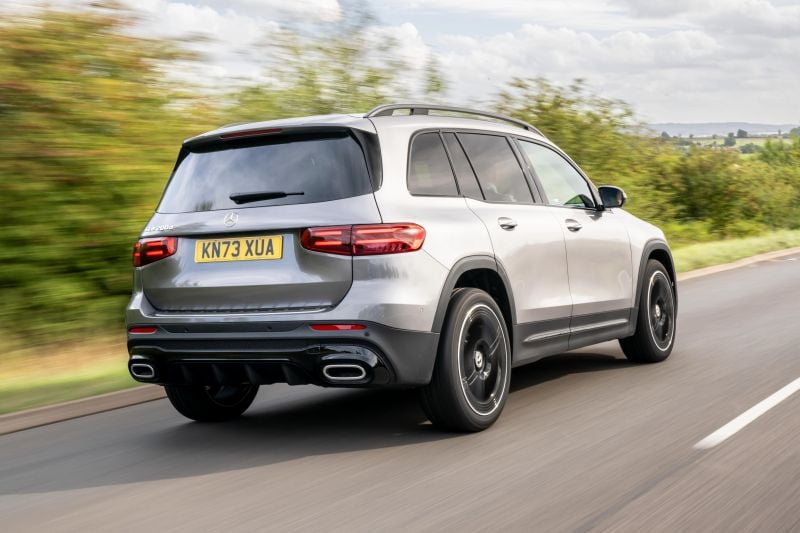What is the Mercedes-Benz GLB-Class like on the inside?
Mercedes-Benz has done a lot with a little here.

Up front it’s standard entry Mercedes-Benz, which means a glossy dual-screen display dominates the dashboard above an array of flash-looking air vents. Even six years on from the debut of this design philosophy with the new A-Class, it has so much showroom appeal.
Our tester maybe went slightly too far into the realm of showroom sizzle, though. The three-pointed star is everywhere here, from the door trims to the dashboard – and at night, some of them are backlit, like a branded take on the Rolls-Royce starlight setup.
It’s eye-catching, but to my eyes it’s also a bit gauche. The build quality, technology, and overall sense of luxury in a Mercedes-Benz cabin should speak for themselves without having to scatter a sky full of three-pointed stars on the dash to remind you what you’re driving.
The fundamentals are solid, though. The seats (trimmed here in black faux leather, suede, and with red stitching that’s no longer offered in Australia) offer a commanding view of the road ahead, and there’s plenty of adjustment for odd-shaped drivers.
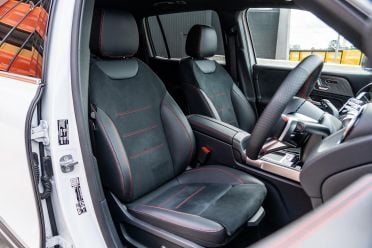
The steering wheel feels brilliant in your hands, although the touch sliders on the four slim spokes are needlessly fiddly on the move. They’re a step backwards from what was offered before, and make simple tasks like changing the volume harder.
By now, we’re familiar with the dual-screen MBUX infotainment system. It can be controlled with steering wheel controls, the touchscreen, or ‘Hey Mercedes’ voice inputs – the touchpad on the transmission tunnel is gone.
Both screens are pin-sharp, with impressively quick responses and deep, vivid colours. In the age of smartphones with ultra-high-resolution screens and lightning refresh rates, they feel like an extension of the tech we’re already using in the best way possible.
Once you’re attuned to how the menus work it’s not hard to jump around, and the fact Apple CarPlay is now wireless and takes up the whole screen is a step forward.

For all the high-tech flash, there’s a disappointing sense of cheapness to parts of this interior.
The plastic toggle switches below the vents aren’t aligned, for example, presenting like teeth in need of braces, and the plastics on the door trims are a cut below what you get in a GLC. At least the panoramic sunroof makes for a light and airy feeling.
Although it’s not meant to be a flagship for Mercedes-Benz, it’s still not quite up to scratch.
There is plenty of storage up front, from the massive underarm storage bin to the big door pockets. You also get three USB-C ports up front, two in the back, and two for third-row passengers.

Rear seat space is one of the major calling cards of the GLB on paper, and it delivers in practice.
The boxy profile frees up an impressive amount of headroom, and with the 40/20/40 folding bench slid to its rearmost position you’ll be able to slot a full-sized adult behind a full-sized driver.
The tall windows and wide-opening doors are both wins for anyone carrying small kids in child seats, and the rear air vents are a necessity in any family car that’s going to survive an Australian summer.
ISOFIX points feature on the outboard rear seats, and there’s a trio of top tethers for child seats.

The third row is genuinely usable by 5+2 SUV standards.
Access is surprisingly simple thanks to the 220mm of range on the sliding second row when the backrests are folded (and the low sill), and back there there’s ample headroom for growing teenagers or regular kids.
Legroom? Well, with the second row in its rearmost position it’s very limited. But with it slid forward, it’s possible to strike a compromise that’ll ensure everyone has enough space to stay comfortable on the school run. It’s a proper 5+2.
At six-seven, I could get back there and fold the second-row seatbacks into place. It’s not exactly a Kia Carnival, but it’s fit for purpose.
There’s storage, USB-C ports, and curtain airbag coverage back there, all of which are welcome and increase the third row’s usability.
The large, flat tailgate is power operated, and can be activated with a kick sensor beneath the rear bumper if your hands are full. Space behind the third row is limited, but there’s enough room for a few shopping bags.
| Dimensions | Mercedes-Benz GLB 200 |
|---|---|
| Length | 4650mm |
| Width | 1845mm |
| Height | 1655mm |
| Wheelbase | 2829mm |
| Cargo capacity | 110 litres (7-seat) 565 litres (5-seat) 1800 litres (2-seat) |
To see how the Mercedes-Benz GLB shapes up against the competition, check out our comparison tool.
What’s under the bonnet?
The engine in the base GLB is shared with a range of Renault vehicles, along with entry-level versions of the A-Class and GLA.
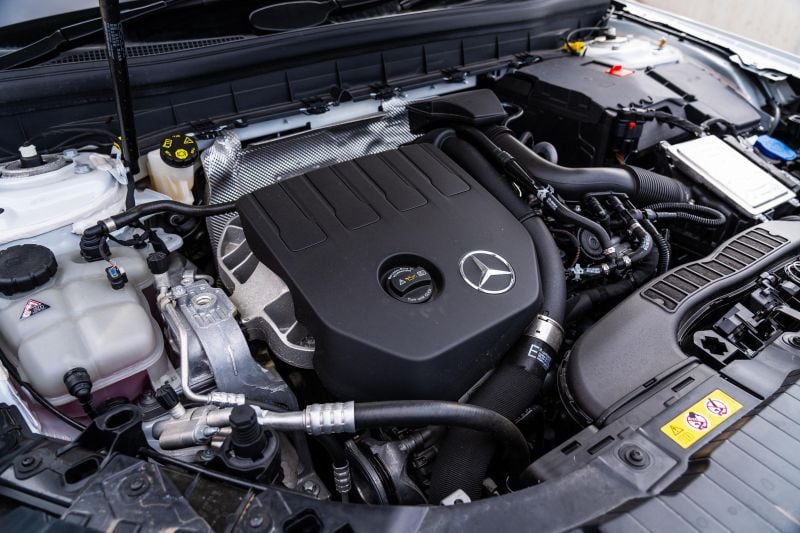
| Specifications | Mercedes-Benz GLB 200 |
|---|---|
| Engine | 1.3L 4cyl turbo |
| Power | 120kW |
| Torque | 270Nm |
| Transmission | 7-speed dual-clutch auto |
| Driven wheels | FWD |
| Weight | 1676kg |
| Fuel economy (claimed) | 7.5L/100km |
| Fuel economy (as tested) | 8.0L/100km |
| Fuel tank capacity | 52 litres |
| Fuel requirement | 95 RON |
| CO2 emissions | 171g/km |
| Emissions standard | Euro 6 |
| Braked tow capacity | 1500kg |
How does the Mercedes-Benz GLB-Class drive?
The bones underneath the GLB are featured in three other cars in Australia, so the way this car drives is familiar.
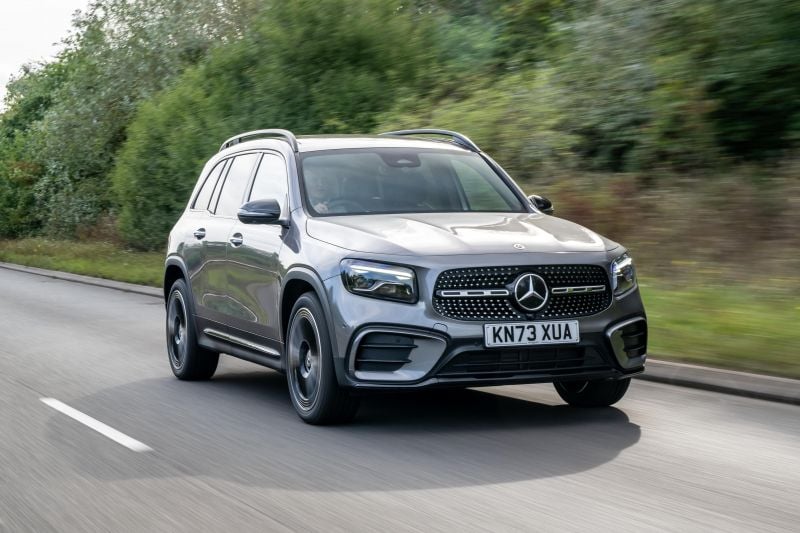
The steering is light in the city, and it’s tuned for comfort. That means speed bumps and the pimply surfaces common in Australian cities don’t ruin the mood behind the wheel, and you can park in tight spaces without massive biceps.
For a little engine, the 1.3-litre unit in the base GLB packs a decent punch once you’re up and rolling. But it can be awkward off the mark when you’re trying to creep slowly in traffic, juddering on light inputs before sharply engaging and surging forward.
Mercedes-Benz has done a good job smoothing out the powertrain’s rougher edges. It’s less awkward here than in its other applications, and with a bit of time you can drive around its quirks – but there’s no escaping the yawning pause when you flick from drive to reverse, or the occasional stunted start.
You’ll notice the engine needs to kick down up hills with only one person on board, and sometimes needs to drop one, two gears with a heavier load to keep its speed up.
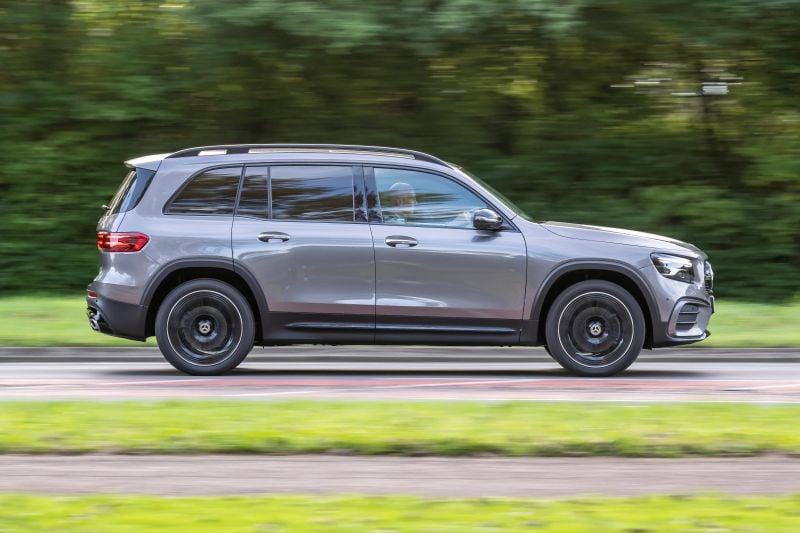
It’s not too noisy in the cabin, with a relatively refined bark, but you’re aware the engine is working hard at times which doesn’t feel particularly Mercedes-Benz.
The way it delivers its torque means all-wheel drive would be welcome as well; the transmission kicks in sharply when you try to accelerate quickly away from the lights, which in the wet can leave the front wheels spinning.
With light steering and upright pillars, this is an easy car to place in town.
As seven-seaters go it’s a very easy one to drive in tight spaces, or to park in narrow underground spots at your local supermarket.
